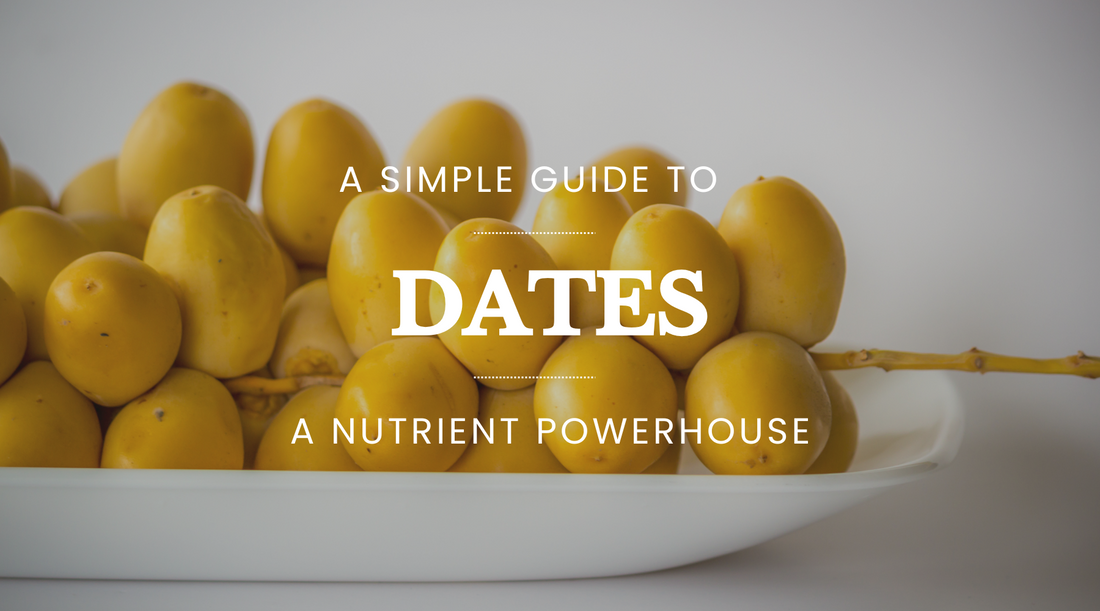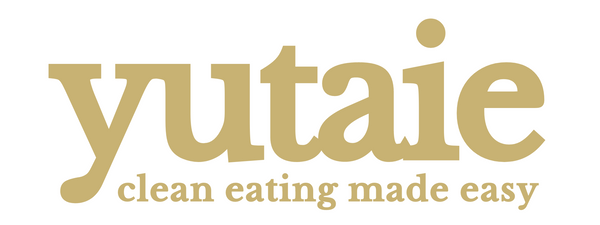
Time for dates!
Share
When the holy month of Ramadan nears, markets and stores are stocked with different types of dates.
Well, the dates are not to be mistaken with the Chinese dates, which are of a different type, the Chinese dates (or red dates) are Jujube which is not a date. Interesting, ain't it? We'll prolly cover more about that in another post.
Back to dates.
If you've ever visited markets in the Middle East or North Africa (MENA region), you've likely been mesmerised by the stunning display of dates!
 Image: Dates being sold in the different markets in the Middle East and North Africa region.
Image: Dates being sold in the different markets in the Middle East and North Africa region.
Unlike overseas markets, dates are commonly sold pre-packed in boxes in Singapore, which made us wonder—perhaps it's time to deep dive into the wonderful dates!
How Did the Name Come About?
The word "date" comes from the Greek word daktulos, which means fingers. This is an apt description of the shape of the fruit, which pretty much tells one how the dates in the olden days look like.
Where Do They Originate?
Dates are commonly grown in the Middle East and North Africa, this is due to the arid and semi-arid environment beneficial for the growth of date palm trees. They play a huge role in achieving environmental balance, as they thrive in harsh climates and even in highly saline sand. They also help mitigate climate change.
Every part of the date palm tree has a use, from nourishing us with its fruit to serving as a raw material in the construction industry. They are also known as the blessed tree!
In modern times, date farms can also be found in the U.S.A., particularly in California. Where the environment is good for them.
Oh! Did you know there is a street in California named after Deglet Nour dates? Yes, Deglet Noor trees are cultivated there as well.

Nutritional Benefits
They are known as a nutritional powerhouse for a reason. In Islam, the Prophet Muhammad (pbuh) considered dates a superior fruit and encouraged people to break their fasts with them, with 22 mentions of dates in the holy book.
Dates contain beneficial properties that can help replenish energy, regulate blood pressure, boost brain health, lower bad cholesterol levels, and so much more!
If you recall, Ix Shen (ex-Mediacorp actor) was in Ukraine when the war broke out, he had dates with him while traveling to Poland—a good advice from his Muslim neighbor back in Singapore. It helped to nourish and boost his energy during the ordeal.
One of the perks of being Singaporean is the opportunity to learn from many other different cultures.
How Are They Grown and Harvested?
Date palms (Phoenix dactylifera) thrive in hot, arid environments with minimal rainfall. They require well-drained soil and ample sunlight to flourish. Cultivation begins with planting either seeds or offshoots (clones of the parent tree), with offshoot propagation being the preferred method to maintain quality and consistency. It takes several years for a date palm to mature and bear fruit.
The growing process involves hand-pollination, as date palms have separate male and female trees. Farmers manually transfer pollen from male to female flowers to ensure successful fruit development. As the fruit ripens, dates change color from green to yellow, red, or brown, depending on the variety.
 Image: Date Palm trees of different varieties
Image: Date Palm trees of different varieties
Harvesting typically occurs between late summer and early fall. Farmers often climb tall date palms or use mechanical lifts to collect the ripe fruit. The dates are then sorted, cleaned, and either sold fresh or dried for longer shelf life. Once packed, they make their way to markets worldwide, ready to be enjoyed in homes and festive meals.
The Different Edible Stages of Dates
The fruit ripens while on the tree, with individual dates ripening at their own pace.
Dates are harvested in clusters (with the branch intact), with each cluster weighing up to 10kg. They are also harvested according to the different stages too!
Let's take a look at the edible stages of the dates.
Stage 1: Khalal

Image: Fresh Bahri Dates from Jordan, copyright of J. Ashe
At this stage, dates are firm, either red or yellow, depending on their breed. Some farms harvest them at this stage.
They are edible but have an astringent taste due to their tannin content. Though crunchy with a clean sweetness, most prefer to let them ripen further before enjoying them.
Because, tannins can inhibit the body's absorption of certain nutrients.
Image: Bahri dates in Stage Rhutab and Deglet Nour in Stage Tamr, copyright of J. Ashe
Stage 2: Rhutab
At this stage, the astringent taste fades, the date turns softer, and sugar content increases.
They are not overly sweet, though sweetness varies by variety.
Stage 3: Tamr
This is the ideal stage, which is also our favourite!
With a soft texture and maximum sweetness, there is no tannin left. After this stage, they become wrinkly and more compact.
For most varieties, dates do not ripen after being harvested. However, some, such as Deglet Noor, continue to ripen post-harvest.
This is why Kounouz Algerian Dates available in our store should be stored in the freezer and portioned to thaw in the chiller before serving.
Regardless of the stage they are harvested, they are still considered fresh, another interesting fact.
Which Date is for you?
Now that we know about the brief history and different edible stages, let's look at the different varieties. With over 600 varieties of dates, choosing the right one can be overwhelming.
Let's explore three popular types found in Singapore.
Medjool

Image: Medjool Dates from Jordan, copyright of J. Ashe
Origin: Tafilalt region of Morocco; also grown in the U.S., Israel, Palestine, Iran, Saudi Arabia, South Africa, and Jordan.
Outlook: Larger in size, known as the "King of Dates."
Taste: Almost caramel-like aftertaste with a chewy texture; very sweet.
Applications: Often enjoyed as a snack, can be hydrated for baking or other culinary uses.
Storage: Store in chiller for extended shelf life
Al-Ajwa

Origin: Al-Medinah, Saudi Arabia. Mentioned in the Quran and is one of the most expensive date varieties from Saudi Arabia.
Outlook: Small, dark brown in color.
Taste: Unique soft texture, sweet with a slightly tangy flavor.
Applications: Enjoy as it is.
Storage: Store in chiller for extended shelf life
Deglet Nour
Image: Kounouz Algerian Dates, copyright of J. Ashe
Origin: Algeria, North Africa. Though also found in Tunisia, there is a noticeable difference in texture and taste due to climate variations and post harvest methodology.
Outlook: Known as the "Queen of Dates" for its size and translucency.
Taste: Almost fiberless, soft, chewy, delicate sweetness with a robust flavor.
Applications: Enjoy as it is, does not require hydration for baking.
Storage: Store in freezer for extended shelf life, portion and thaw in chiller for serving.
Available at our store here.
Other Products made with dates
Other than having them fresh, dates are being made into vegan honey, date syrup, date sugar, vinegar and more, due to the low-glycemic index(GI) and versatile properties, the nutritional loss are at a minimal despite of any heat processing methodology.
There is pretty much no need for any addition of other ingredients too, the taste of the by-products differs with the different type of processing method(s).

Image: Kounouz Date Syrup copyright of J. Ashe
For example; the Date Syrup is made with just dates and water, boiled and reduced to a syrupy texture, the taste of it resembles our Kicap Manis. Which makes it a great sauce alternative for friends with soy allergy.
Conclusion
Dates are more than just a delicious treat; they carry deep cultural and religious meaning, particularly during Ramadan. Their journey from sun-drenched date palm farms to our tables is a testament to the dedication of farmers who nurture and harvest them with care. Whether eaten plain, blended into smoothies, or incorporated into desserts, dates remain a beloved and nutritious fruit enjoyed by many across the globe.
So, what's your preferred date to date?



